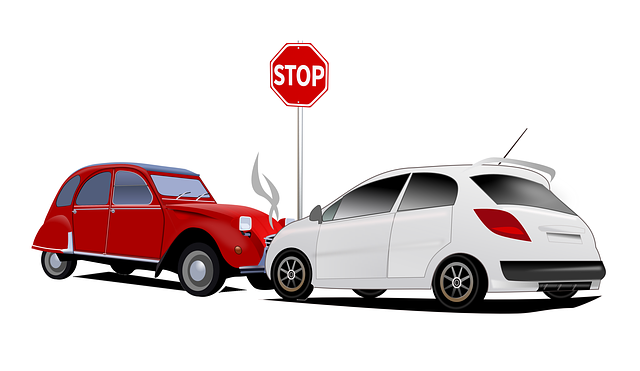Car crash statistics Australia
Matilda Douglas-Henry
As a vehicle owner
and operator it is vital that you are as safe on the roads as possible, for
yourself and others. Regularly navigating Australian traffic—and most
importantly, fellow drivers—makes you vulnerable to accidents and collisions at
all times. Not only is it necessary to be a careful and defensive driver;
DingGo recognises the importance in drivers being aware of the up-to-date car
crash statistics in Australia so that we are all familiar with the very present
risks each time we hop behind the wheel. Here we will discuss car crash
statistics, including:
- An overview of car crash statistics in Australia
- Car crash statistics by state
- Non-fatal car crash statistics
- The most common causes of car crashes in Australia

Australian car crash statistics: an overview
More Australians have
died in car crashes than World War I, World War II, and the Vietnam War
combined. The number of car crash
fatalities have steadily decreased
in Australia since 1970, where they
peaked at 3,798. In 2014 they were at a record low of 1,154, and in the years
since have hovered around the 1,200 mark.
Multiple factors have contributed to the significant decrease in car crash fatalities. These include road design, driver education, heavier presence of law enforcement, and of course vehicles themselves becoming safer as time goes on. In 2014 road accidents were the cause of 45% of deaths within the 17 to 25 age group, and with each 5km/h you drive over 60km/h, you double the risk of being in a serious car crash.
Car accidents cost Australia approximately $27 billion each year[1].
Car crash statistics by state
From 2016 to 2021 New South Wales has been the state with
the highest number of road deaths,
with the exception of 2021 where, so far, Queensland is narrowly in the lead. The
ACT has consistently seen the fewest road deaths, which certainly makes sense
when we consider that the ACT is
regarded as the safest driving state
in Australia[2].
What to make of New South Wales’ data? The high fatality count would be due to a number of factors, but perhaps most likely because of road conditions in rural areas: serious accidents happen more often on regional roads than metropolitan ones.
Although New South Wales is the state with the most road deaths over the past five years, Queensland recorded 22.2% more deaths in 2020 than the previous year. This jump made them the state with the highest increase in deaths across a 12-month period. Conversely, Victoria recorded 19.6% less deaths than 2019, which was the largest reduction. It might surprise you to learn that although Victoria is one of the safer states to drive in, Plenty Road in Bundoora—not far from Melbourne’s CBD—is cited as Australia’s most dangerous road[3].
Non-fatal car crash statistics
As at June 2020
serious injuries as a result of a car crash have been trending down. The most
affected age group is 26 to 49 at 3,500, which is a 14.9% decrease since June
2019[4].
It is difficult to find statistics on non-fatal car crashes because the focus is so often on road deaths. However, we can use this data on the most common car crashes to glean insight into the non-fatal crashes you are most likely to encounter on Australian roads.
Rear-end collisions are the most common type of car accident in Australia, accounting for 31% of crashes. Rear-end collisions occur when a driver is not paying attention to the road, and by extension the vehicle in front of them. It’s important to leave ample room between your car and the one in front of you—particularly in poor weather conditions—to minimise the risk.
Failure to give way is another common cause of car crashes. This can happen due to a driver’s poor judgment of gaps in traffic, as well as blind spots leading to visibility obstructions on the road. Rear-end collisions and failure to give way are serious errors that can lead to both fatal and non-fatal car crashes. It is essential to navigate the roads as a risk-averse driver to ensure, as much as you possibly can, that you will avoid these types of accidents.
Collisions with a stationary object, while reversing, or with parked cars, are also common iterations of car crashes that are most likely to be non-fatal, but can lead to injury and almost certainly external damage to your vehicle (or someone else’s). Hitting an animal, notably a kangaroo, makes up for 90% of animal accidents in New South Wales. Drive slowly when in areas that are known for their kangaroo population, particularly at dawn or dusk[5].
What are the causes of car crashes in Australia?
The most common
causes of car crashes in Australia are known as the “fatal five”:
Speeding is a contributing factor in approximately a third of fatal accidents in Australia. Collisions at what might be considered a low speed, like 30km/h, are already extremely dangerous for cyclists, pedestrians, and exposed passengers. Many fatal accidents occur from cars coming off the road after turning corners too quickly.
Driving under the influence matches speeding with it being a factor in around 30% of all fatal crashes. While lots of awareness campaigns have emerged in the past 20 years, many drivers still choose to take the risk and get behind the wheel while under the influence of alcohol. Now that we live in the age of Uber and other ride services, though, there is really no excuse.
Not wearing seatbelts does not cause car crashes per se, but is responsible for many road deaths as well as serious injuries. Statistics show that you are 10 times more likely to die in a car crash if you are not wearing a seatbelt.
Fatigue is just as dangerous as driving under the influence, but of course it is much harder to detect and prevent than drink driving. Many people are simply unaware of the extent that fatigue affects their cognitive abilities, so will think they pose no risk to themselves or others. It’s always valuable to recall “Stop. Revive. Survive”: if you are feeling even a little tired, pull over immediately and rest for at least 10-15 minutes.
Distraction was only recently added to the leading cause of road deaths in Australia. The relatively newfound prevalence of smartphones and navigation systems has created a massive uptick in distraction-related car crashes, although it encompasses a number of other situations: looking at a passenger during a conversation, attempting to retrieve an item from another part of the vehicle, and even drinking and eating. It’s simple: do not take your eyes off the road unless your vehicle is stationary[6].
Conclusion
It is true that there
is only so much you can do on the road to protect yourself and others: all it
takes is one reckless driver to put you and your passengers at risk. But being
mindful of Australian car crash statistics allows us to navigate each drive with
caution. There are a lot of steps you can take to ensure the road ahead is as
safe as possible.
[1]
https://www.science.org.au/curious/australian-road-statistics
[2]
https://www.statista.com/statistics/991555/number-road-deaths-by-state-australia/
[3]
https://www.dinggo.com.au/blog/road-accident-statistics-in-australia-in-2020
[4]
https://www.greenslips.com.au/interesting-statistics.html
[5]
https://www.suncorpgroup.com.au/news/features/australia-s-most-common-car-accidents-revealed-in-the-aami-crash-index
[6]
https://ubicar.com.au/blog/the-fatal-five-most-common-causes-of-fatal-vehicle-accidents-in-australia/
